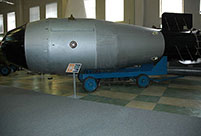 Yanxi Lake: Venue for APEC China 2014
Yanxi Lake: Venue for APEC China 2014
 Top 10 pricey destinations for studying abroad
Top 10 pricey destinations for studying abroad
 Couple chase tornados to create perfect storm photos
Couple chase tornados to create perfect storm photos
 Goddesses at Golden Eagle Festival
Goddesses at Golden Eagle Festival
 J-10 fighters show aerobatic stunts in smog-free sky
J-10 fighters show aerobatic stunts in smog-free sky
 Top 10 charming female soldiers of the PLA
Top 10 charming female soldiers of the PLA
 Charming contestants of Shanghai Int’l Model Contest
Charming contestants of Shanghai Int’l Model Contest
 Most amazing chi-pao beauties
Most amazing chi-pao beauties
 Beauties forever
Beauties forever
 Picturesque autumn scenery of Hongshan Army Horse Ranch
Picturesque autumn scenery of Hongshan Army Horse Ranch
SHANGHAI, Oct. 17 -- Low-end manufacturing is leaving China for cheaper labor in Association of Southeast Asian Nations (ASEAN) countries, and this value chain shift will boost trade between China and ASEAN, according to economists.
"Labor-intensive industries are likely to move to the ASEAN economies in the coming years, driven by lower wages in the region," Li Wei, a China economist with Standard Chartered Bank, said in a briefing on China-ASEAN trade on Thursday.
According to Li, ASEAN economies such as Thailand, Vietnam and Laos, which have an annual per capita GDP less than 6,000 U.S. dollars, will likely become the destination for low value-added, labor-intensive industries from China.
"Labor-intensive jobs are leaving China for sure. If it's not going to ASEAN, it's going somewhere else." Li said.
The trend of low-end manufacturing relayed from China to ASEAN economies will also create new opportunities for bilateral trade and investments. The group of ten Southeast Asian economies has been China's third-largest trading partner for four consecutive years, with double-digit trade growth in the past decade.
Chinese leaders set an ambitious goal this year to bring trade with ASEAN to 1 trillion U.S. dollars by the end of this decade.
However, growth of bilateral trade has moderated to six percent during the first nine months of this year, China's customs statistics show, triggering fears that regional tension and political instability in some ASEAN nations have weighed on the economic relationship with China.
Yet at six percent, the number still came in better than the 1.8-percent year-on-year growth for China's trade with the rest of the world. According to the China-ASEAN Business Council, machinery, rubber, steel and textile products account for the majority of trade between China and ASEAN.
"Growth will continue to moderate if China and ASEAN continue to trade the way they have done in the past decade. Only a new production network connecting China and ASEAN countries on a deeper level will give bilateral trade a renewed boost," said Wang Yuzhu, a researcher with the National Institute of International Strategy under the Chinese Academy of Social Sciences, a government think tank.
Infrastructure, resources, and labor-intensive industries are areas where China and ASEAN nations will see increasing cooperation in the future, Wang said, adding that governments should work to eliminate non-tariff barriers and expand market access to each other.
China has also pledged greater engagement in the Mekong River Basin as countries such as Myanmar and Cambodia embrace a more open economy. This will unleash demand for infrastructure and consumption as income levels rise with the arrival of more manufacturing jobs in the region.
"I think there is a lot of China potential investment coming into Vietnam, Laos, Thailand and Myanmar, and a lot of it is construction and infrastructure, really areas China has a lot of expertise in," said Lyn Kok, Standard Chartered Bank's Thailand & Greater Mekong CEO.
While economies in the region have traditionally been vulnerable to political tensions, Kok said their impact on the economy is limited.
"There is this image of lots of political protests and [the] military coup in Thailand, but [the] political situation of the country is delinked from business opportunities. It is a very resilient economy and the impact on the economy is mainly external factors, not political."
China is also looking to ASEAN economies to promote the global use of its currency, the Renminbi, or yuan. Singapore, an ASEAN economy, is also one of the fastest-growing offshore yuan hubs, with 200 billion yuan in deposits as of the end of the first quarter this year.
Meanwhile, China's central bank has a currency swap line totaling at least 500 billion yuan with major economies in the bloc.
"As China investment into the region ramps up, there will be increased demand for financing tools, which could be an opportunity to push for the yuan's wider acceptance in the region," Standard Chartered economist Li said.
China's direct investment into ASEAN economies hit 5.74 billion dollars last year and 3.56 billion during the first half of this year.
Kok also cited a Standard Chartered survey of ASEAN companies showing the Chinese yuan has grown into a popular investment currency in the region, with more than 70 percent of respondents saying they used yuan-denominated investment products.
 Shocking! Photos of Chinese fighters revealed
Shocking! Photos of Chinese fighters revealed Blue Angels thrill spectators in San Francisco
Blue Angels thrill spectators in San Francisco World's most intimidating nuclear weapons
World's most intimidating nuclear weapons Standard faces for each countries
Standard faces for each countries Who is China's campus beauty queen?
Who is China's campus beauty queen? Netizens fall in love with champion swimmer Ning Zetao
Netizens fall in love with champion swimmer Ning Zetao Vibrant 21-year-old and her own Cheongsam brand
Vibrant 21-year-old and her own Cheongsam brand Fashion style: Faye Wong vs Cecilia Cheung
Fashion style: Faye Wong vs Cecilia Cheung Leading director Wang Quan'an detained for 'buying sex'
Leading director Wang Quan'an detained for 'buying sex' Top 10 handsome football players
Top 10 handsome football players  Top 10 Chinese goddesses
Top 10 Chinese goddesses  Top 20 hottest women in the world in 2014
Top 20 hottest women in the world in 2014 Top 10 fifth generation jet fighters in the world
Top 10 fifth generation jet fighters in the world Top 10 pure beauties in showbiz
Top 10 pure beauties in showbiz  Top 10 world's highest-paid models 2014
Top 10 world's highest-paid models 2014 The most gorgeous Chinese women
The most gorgeous Chinese women Top 10 most handsome faces in Asia
Top 10 most handsome faces in AsiaDay|Week|Month